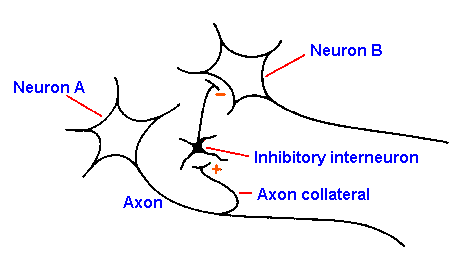Vibration and pain management
Top Contributors - Admin, Kim Jackson, Vidya Acharya, Jess Bell, George Prudden and WikiSysop;
Vibration therapy[edit | edit source]
Vibration therapy uses vibration as a physical tool during treatment. Vibration is to the propagation of elastic waves producing deformations and tensions on a continuous medium. The vibratory movement is very short and fast and repeated around an equilibrium position.
Vibration can be applied with differents devices as local therapy or as whole body vibration.
Acute responses[edit | edit source]
According to the closed-door theory of Melzack & Wall, low-intensity mechanical stimuli, not aggressive enough to stimulate nociceptors, activates the inhibiting interneurons. Inhibitory neurons intervenes in several processes of regulation of the neurological signal. Without their braking activity, we would have too many nociceptive stimuli / pain experiences. Therefore, applied mechanical vibration can have a summative effect, with other pain control strategies, in reducing behavioral and physiological pain responses.[1]
In vibration therapy, the stimulation of muscle spindles and alpha-motoneuronsmuscle causes muscle contraction and it increases electromyographic activity. Oxygen consumption, muscle temperature and skin blood flow increases directly proportional to vibration.[2] [3]
Pain management [edit | edit source]
- Neuropathic pain: Whole body vibration has positive long term effects on neuropathic pain caused by diabetes. [4]
- Low back pain.Combined vibration and traction therapy is more effective than traction alone. [5]
- Heel lance pain among neonates: Mechanical vibration may be an effective and safe method for pain management of heel lance pain among neonates.[6]
- Muscle Pain: Several articles investigate the effects of therapeutic vibration on the Delayed Onset Muscle Soreness (DOMS). Some of them concludes that both the vibration applied locally and the whole body vibration, reduces pain. Furthermore, they point that vibration therapy improved muscular strength, power development, kinesthetic awareness, range of motion, and increased blood flow under the skin. [7] [8]
Other applications of vibration in physical therapy[edit | edit source]
There is little scientific research that studies the use of vibration in physical theraphy. Most published articles are about whole body vibration. Some studies evaluate the effectiveness of vibration as a treatment for spasticity with good results.[9] An article concluded that local vibration can be a safe and efectiv alternativ for chronic post stroke patients.[10]
Vibration therapy can be used to improve physiotherapy effects in individuals with Parkinson's disease and Multiple Esclerosis. [11] [12]
As vibrations induce muscle contractions, they may be used to enhance the osteocit metabolism and prevent osteoporosis in patients with reduced mobility.[13]
Contraindications[edit | edit source]
- Blood thinning medications
- Advanced diabetes
- Heart disease
- Pregnancy
References[edit | edit source]
- ↑ Butler D, Moseley L.2015. Explain Pain
- ↑ McGinnis K, Murray E, Cherven B, McCracken C, Travers C. Effect of Vibration on Pain Response to Heel Lance: A Pilot Randomized Control Trial. Adv Neonatal Care. 2016 Aug 16. Epub ahead of print.
- ↑ Ayangco M, Bosco C. The use of vibration as an exercise intervention. Exercise and sport sciences reviews. 2003;31(1):3–7
- ↑ Cochrane DJ, Stannard SR, Sargeant AJ, Rittweger J. The rate of muscle temperature increase during acute whole-body vibration exercise. European journal of Applied Physiology. 2008;103(4):441–8.
- ↑ Wang S, Wang L, Wang Y, Du C, Zhang M, Fan Y. Biomechanical analysis of combining head-down tilt traction with vibration for different grades of degeneration of the lumbar spine. Medical Engineering and Physics 2016. Published online 2 november
- ↑ McGinnis K, Murray E, Cherven B, McCracken C, Travers C.Effect of Vibration on Pain Response to Heel Lance: A Pilot Randomized Control Trial.Adv Neonatal Care. 2016 Aug 16. [Epub ahead of print]
- ↑ King L, Almeida QJ, Ahonen H. Short-term effects of vibration therapy on motor impairments in Parkinson's disease. Neurorehabilitation 2009, vol. 25, no. 4, pp. 297-306
- ↑ Shyns F, Paul L, Finlay K, Fergusson C, Noble E. Vibration therapy in multiple sclerosis: a pilot study exploring its effects on tone, muscle force, sensation and functional performance. Clin Rehabil September 2009 vol. 23 no. 9 771-781
- ↑ Rittweger J, Beller G, Felsenberg D. Acute physiological effects of exhaustive wholebody vibration exercise in man. Clin Physiol. 2000;20:134–42.
- ↑ Hong J, Barnes MJ, Kessler NJ. Case study: Use of vibration therapy in the treatment of diabetic peripheral small fiber neuropathy. International Journal of Diabetes Mellitus. Volume 3, Issue 1, May 2015,72–75
- ↑ King LK, Almeida QJ, Ahonen H. Short-term effects of vibration therapy on motor impairments in Parkinson's disease. NeuroRehabilitation. 2009;25(4):297-306.
- ↑ Yang F, Estrada EF, Sanchez MC. Vibration training improves disability status in multiple sclerosis: A pretest-posttest pilot study.J Neurol Sci. 2016 Oct 15;369:96-101.
- ↑ Rauch F. Developmental Medicine & Child Neurology 2009, 51 (Suppl. 4): 166–168







